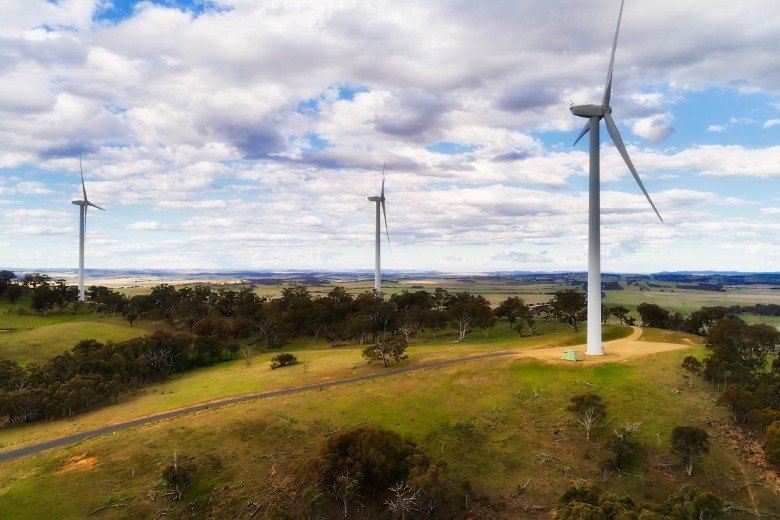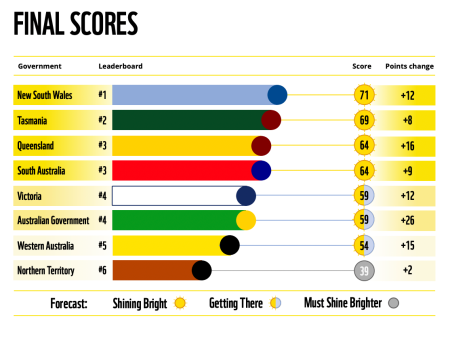
NSW has taken the overall top spot on WWF Australia’s renewable energy scorecard, outranking all other states and the federal government on renewable energy zones, precincts and investment.

Tasmania, the first state to reach 100 per cent renewable energy generation, came in at second place with Queensland and SA third.
The annual Renewable Superpower Scorecard presents a snapshot of how Australia’s states, territories and the federal government are performing on renewables.
This third and latest edition provides an update on progress over the past twelve months, from November 2021 to November 2022.
The scorecard ranks states and territories across 11 categories on their progress switching domestic energy systems to renewables, as well as how they are doing establishing new national renewable export industries.
NSW tops the ladder with a total score of 71 out of a maximum 110, followed by Tasmania with 69. Queensland and SA are tied for third place with 64. The Victorian, WA and the federal governments achieved ‘getting there’ status.
The NT languished at the bottom with a ‘must shine brighter’ due to budget support of hydrogen from fossil fuels.

WWF Australia CEO Dermot O’Gorman says governments are stepping up in the race to a net-zero future since the first scorecard was released.
“We are at the start of Australia’s transition and so much more is possible. The Asia-Pacific region is home to half the world’s people and its biggest and fastest growing economies,” he writes in a foreward to the report.
“With unparalleled sun and wind resources, Australia is perfectly placed to redefine our role in the world – to become a renewable exports superpower, and a true global leader on climate solutions.”
Investment risks must be removed
The Clean Energy Investor Group (CEIG), which represents domestic and global renewable energy investors in Australia, says information about government policies contained in the scorecard provides valuable guidance for investors.

“We are pleased to see governments are increasingly aligning with CEIG’s Clean Energy Investor Principles in designing investable markets for clean energy investment,” CEO Professer Simon Corbell said.
“Ambitious state plans for storage, transmission and renewable energy zones, which are tracked in WWF Australia’s Scorecard, provide a good foundation for export-oriented growth.”
However he says there is still much work to be done, with legacy policy and regulatory obstacles in the NEM increasing risk for investors, and lagging development of transmission networks.
The CEIG would also like to see superannuation reform support long term investment in clean energy infrastructure, he said.
NSW Energy Minister Matt Kean said the government is currently considering bids for 5.5GW of wind and solar generation projects, and more than 2.5GW of long duration storage powers.
“We are on track to deliver the trifecta of clean, reliable and affordable power,” the minister said.
“The work going into our Electricity Infrastructure Roadmap will make NSW a renewable energy superpower to propel our prosperity for decades to come.”
The WWF has also released a Technical Report to support the Renewable Superpower Scorecard.
Comment below to have your say on this story.
If you have a news story or tip-off, get in touch at editorial@governmentnews.com.au.
Sign up to the Government News newsletter